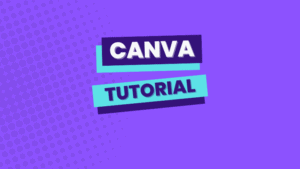This checklist for building your email list using Facebook ads for small business covers everything you need to know before you spend your first dollar on Facebook.
The big question you might have is…
“Should I be marketing my business with Facebook ads? Can they actually work for me?”
Facebook Ads For Small Business – Are They Right For Your Business?
When it comes to paid advertising on Facebook, these are two of the most frequently asked questions in my inbox. And maybe you’re eager to jump on this train.
Maybe you’ve heard about other people’s terrific results, so it seems to make sense to invest a few bucks if it can make you hundreds in return, right?
But before you start handing you money over to the social networking giant, ask yourself a different question: “Do I have everything in place to actually make money from my Facebook ads?”
More often than not, the people that I work with come to me thinking that Facebook ads are THE tool they’ve been looking for in order to grow their list.
But once we start talking about what list building is all about – bringing more people into your world so they can eventually pay you for your products or services – they need to put on the breaks. They realize that some pieces of the Facebook ads puzzle need some serious tweaks (or are missing altogether).
So what are the pieces you need to have in place before you’re ready to pull the Facebook ads trigger? This is the exact checklist I use with prospective clients before I take on any Facebook ads project.
Make sure you have these four things in place in your business before you start driving paid traffic to your site:
1. A piece of free opt-in content that’s dead useful for your ideal customer.
My #1 strategy for building a large email list with Facebook ads is to leverage a killer piece of free content. It’s easy for me to give you my email address in exchange for your video, checklist or guide. But the Internet is loud and full of distractions! Your free giveaway needs to really wow me if you want to make a lasting impression.
Killer Piece of Free Content
Nathalie’s 30-Day List Building Challenge is an example of content that really knocks it out of the park. It’s got so much valuable information; if she wanted to, Nathalie could absolutely charge for it instead of giving it away.
This is the definition of “providing value,” and that’s what makes people share her Challenge like crazy. Think of it this way: if she were running ads, Nathalie could spend $1-2 on Facebook ads for each email sign-up. When that person forwards the link or shares it on social media, however, that’s going to drive even more people to sign up for her list.
As a result, her cost per sign-up would go down with every share. If you don’t have a free PDF, video, checklist, ebook, Facebook group, or other kinds of content you can give away to visitors, don’t spend your money on Facebook ads (yet).
You may think the newsletter sign-up form you have on the sidebar of your blog is good enough, but this is the time when you really need to be thinking about conversion rates. (More on that next.)
2. A landing page that converts like crazy. (Translation: 40% or higher.)
Most small business owners don’t create a piece of quality opt-in content overnight. It takes time and maybe even some money. (Mine took about a month to finally finish, and we’re not even going to talk about its initial design.)
Facebook Ads Cost Per Conversion
So when it comes time to start paying for traffic, the conversion rate of your landing page will play a huge role in how much you spend to get your content into people’s hands.
Your conversion rate is the percent of all the visitors to your landing page who opt into receive your content. Here comes a little math!
Stay with me, it’ll be worth it.
Let’s say you spend $200 to bring 300 people to your landing page. If your landing page only has a 25% conversion rate, you’ll have paid $200 to get 75 new subscribers. That’s about $2.67 per subscriber.
However, if your landing page converted at 50% instead of 25%, you’d bring in double the subscribers (150) for the same amount of money! And your cost per new subscriber would be $1.34.
See how a better converting landing page could get you email subscribers for half the cost?
So pay close attention to your sales landing page headline and the copy, make sure its design is appealing to your audience, and don’t forget to set up goals in Google Analytics so you can track your conversion rate now and in the future.
3. A plan to nurture your new leads via email.
You’ve collected leads with your incredible free content and a rockin’ landing page. Now what? Make sure your new subscribers have a way to get to know you, your business and your offerings.
You can’t assume that since I discovered you from a Facebook ad that I’ll be coming back to your site week after week just because.
Make sure you’re emailing your list on a regular basis, sharing more content (like blog posts, videos, etc.) and guiding people over to the pages on your site that will hopefully turn your new leads into new customers or clients.
That brings us right up to the most important piece of this list:
4. A clear product or service to sell.
If you haven’t figured out exactly how to make money from your business, do NOT start putting your own cash into paid traffic. Sure, you can work on building your list in order to launch something in the unforeseen future, but there are FREE ways to do that.
If you don’t have a list of your products or services somewhere on your website, then you’re wasting a huge opportunity by driving traffic that can’t turn into money in the bank.
Confession time: I’m guilty of committing this rookie mistake myself. When I started out as a Facebook ads consultant, I had no clear offerings.
People would find me via Google or YouTube, and I would put together proposals and pricing based on their needs. When I saw that my opt-in content was converting nicely, I decided to start running my own list-building ads. My ads drove people to sign up for a free PDF guide.
Tell People What They Can Buy
What was the goal behind giving away so much free advice? To try to land more clients.
So I started running Facebook ads, hoping that some new subscribers would end up becoming clients. But no one showed any interest in hiring me. It wasn’t until later that I realized that no one knew what they could hire me for, and they weren’t going out of their way to ask, either.
Eventually I wised up and put together two consulting packages at different price points. I threw together a services page and made sure to include links to it in emails that my new subscribers received.
Was that page perfect? Of course not, but the point is that the people I was paying to reach were finally able to consider hiring me to help with their campaigns.
Nathalie talks about this same mistake in her video about blocking your revenue streams (and how money is like water – so true!).
Don’t assume that just because your subscribers signed up for something free that they’re not willing to pay for anything, ever.
Your business may provide the solution to the exact problem they’re struggling with now, so it’s up to you to make sure they know about your offerings.
Don’t forget to include links to those pages in the emails to new subscribers and even somewhere inside your free opt-in content!
Now that you’ve got those four pieces in place in your business, it’s a good time to look at your list, consider your plans for growth, and assess where your current leads are coming in from.
Facebook ads can be a great way to grow your list quickly, especially right before you launch your next product or service.
Facebook ads can be a great way to grow your list quickly.
But whether or not you want to invest money in social advertising, focusing on the four things above will help you guide more people along through your sales and marketing funnels to consistently grow your business.
GETTING STARTED WITH YOUR FIRST Facebook Ads CAMPAIGN


Ready to dive into the world of social advertising? Start with a simple campaign with just a few ads to start. Here are some guidelines for putting it together:
- Identify the page on your website you want to drive traffic to. What’s your most popular content or highest converting landing page? Use that for your first campaign.
- Choose “Website Conversions” or “Clicks to Website” for your campaign’s objective. To track sign-ups to your list, go with “Website Conversions” and make sure you have conversion tracking set up.
- Use a landscape-oriented image of yourself and write a clear call-to-action in the copy of your ad. Here’s an example of one of my own ads:


- Set a daily budget of $10 and run your ads for 2 days. If you notice that your social media posts get more engagement on the weekends, include a weekend within those 2 days. Otherwise, start your ads on a Monday or Tuesday.
- Try not to touch your campaign for those 2 days. (It’s tough, I know!) Even if your campaign doesn’t get results, at least you’ll have enough information to figure out why.
- After 2 days, take a look at your results. If you aren’t happy with the number of clicks or conversions your ads got, do NOT despair. Facebook ads usually require a lot of testing and tweaking to figure out, so be prepared to try different things. Use this guide to get to the root of what went wrong.
- Get back on that horse! Make the necessary changes to your campaign and run them for another two days.
Dying to put Facebook ads to the test? Tell us what you’re going to promote in the comments below!
Photo by Cliffano Subagio.







